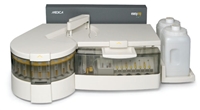According to Pioneer Reports, the global clinical chemistry analyzer market size, which was USD 10,513.13 million in 2017, is expected to reach USD 14,595.16 million by 2023, growing at an estimated CAGR of 5.62%. Clinical chemistry analyzers are used in a variety of settings, including small clinics, research labs, high-throughput hospital labs and at the point-of-care, such as in physicians' offices and patient bedsides. The devices run assays on blood serum, plasma and urine to detect the presence of analytes relating to disease or drugs.
According to the new market report, key factors that will drive the growth of this market include
- Rapid growth in the diagnostics market
- Increase in the healthcare spending
- Increasing incidence in lifestyle disease
- Increasing awareness for preventative healthcare
- Increase in aging population
- Increase in reagent rental agreements, and
- Increasing demand for laboratory automation
This report categorizes the market on the basis of product type, application, region as well as market players. By product type, the market is segmented into Basic Metabolic Panels, Electrolyte Panels, Liver Panels, Lipid Profiles and Renal Profiles. Based on application, the market includes Academic Research Centers, Diagnostic Laboratories, Hospitals and Other End Users. Geographical regions covered by this global market include North and South America, Europe, China, South Korea and India.
Key market players include Abbott Laboratories, Danaher Corporation, F. Hoffmann-La Roche Ltd., Johnson & Johnson, Siemens AG, Elitech Group, Horiba, Ltd., Mindray Medical International Limited, Randox Laboratories Ltd., Thermo Fisher Scientific Inc., and more.
Choosing the right chemistry analyzer for your laboratory will depend on the types of test you wish to run and other factors such as sample handling, degree of automation, data management, operating costs and footprint.



